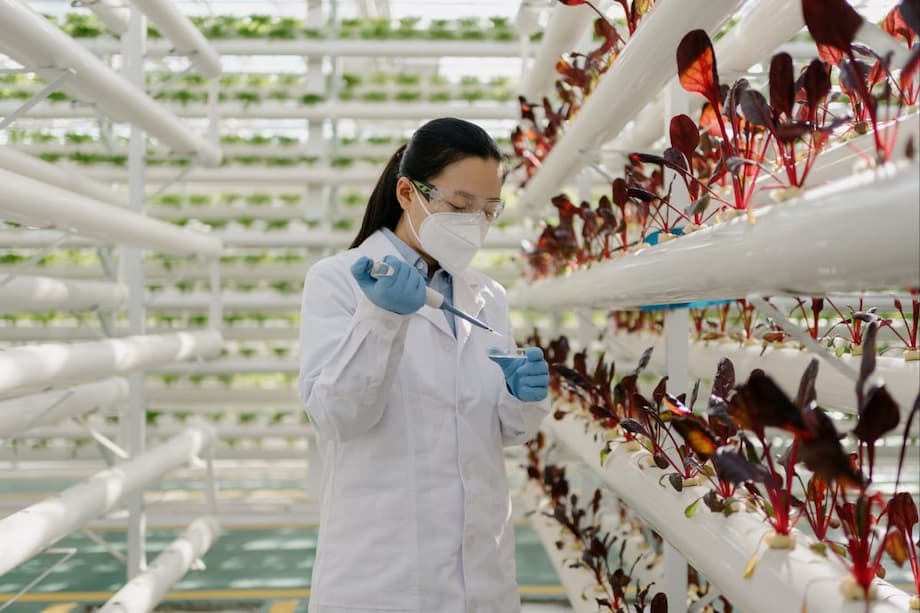Shanghai tests a new way to keep mothers in science
Shanghai has opened a new front in two pressing challenges: slowing population growth and retention of high skill researchers. A pilot subsidy known as the Keyan Return Plan offers targeted help for female scientists returning to the lab after childbirth. The idea is simple, keep promising researchers on track during the most vulnerable phase of their career, while sending a signal that starting a family should not cost a life in science. The plan begins with the Shanghai branch of the Chinese Academy of Sciences (CAS), a cluster of institutes that span fields from optics to public health. Twenty eligible new mothers will receive a one time grant of 50,000 yuan, roughly 7,000 dollars, to help restart projects, pay research costs, and regain momentum after maternity leave.
The program is administered by the Shanghai Women’s Association for Science and Technology and it comes with clear eligibility rules. Applicants must be under 40, hold a doctoral degree and a deputy senior professional title or higher, and have given birth within the past two years. Their work must align with priority areas that Shanghai and the country want to advance, including frontier technologies, economic development needs, national demands and public health. Achievements to date matter, since the pilot aims to direct limited funds to researchers who are most likely to continue producing high impact work.
City leaders have tied the plan to a broader push to create a birth friendly environment and to strengthen the talent pipeline that powers laboratories and advanced industry. The timing is deliberate. China faces a third straight year of population decline and a rapid rise in the average age of first time mothers. At the same time, Shanghai wants to deepen its role as a global science hub, so keeping trained researchers through the early years of parenting has become a practical priority.
How the Keyan Return Plan works
Each award is small in absolute terms compared with major grants, yet the design is tailored to the bottlenecks new mothers face. According to the pilot outline, 50,000 yuan arrives as a single grant. In a similar plan description at the academy, 30,000 yuan is earmarked for core research expenses, with the remainder available for related costs such as lab services, small equipment, data acquisition or help covering temporary assistance. The aim is to smooth the ramp back into fieldwork, experiments and paper submissions so that a maternity break does not stretch into a permanent exit.
Who can apply
The pilot phase focuses on one of the country’s most influential research clusters, the CAS Shanghai Branch. Eligibility reflects both career stage and recent life events, and it prioritizes fields aligned with national and city goals.
- Doctoral degree with a deputy senior professional title or higher
- Under 40 years old
- Gave birth within the previous two years, with the academy window opening after September 1, 2023
- Active in frontier technologies, economic priorities, national demands or public health, with proven achievements
- Affiliated with the CAS Shanghai Branch for this phase
The selection pool is large. The CAS Shanghai Branch counts 4,421 women researchers, yet only 20 awards are available in the first tranche. Program organizers aim to reach those at risk of leaving research despite demonstrated potential. In practice, the pilot sets a high bar to focus a small budget where it can most quickly prevent talent loss.
Why many women in labs step off the track
Scientific careers depend on steady publication, grant renewals, and presence in the lab. Many of the most demanding years arrive in the late twenties and thirties, the same period when many families plan to have children. Review panels often look for year by year productivity and leadership on projects. Interruptions can make it harder to win the next grant or promotion even when a researcher’s underlying ability has not changed. A targeted bridge grant can keep experiments running, maintain a team, and shorten the time from return to first post leave paper submission.
Shanghai’s data show both progress and persistent gaps. Women account for nearly 44 percent of the city’s science and technology workforce. Within the CAS Shanghai Branch, women represent 38.7 percent of all staff, rising to 58.3 percent among researchers in the life sciences. Their share drops at the top. At the 2024 Shanghai Science and Technology Awards, only one in five winners were women. Nationwide, women make up about 6 percent of academicians in the top two national science academies and under one fifth of scholars selected by national talent programs. Studies in China have found that women’s academic productivity falls by roughly one fifth after childbirth, while men’s output is largely unchanged. At CAS, maternity leave lasts at least six months, which helps, yet reentry still often coincides with grant deadlines and evaluation cycles.
What the research shows
Work happening in Shanghai underlines why retaining experienced female scientists has direct public value. Local teams have examined the links between prenatal exposure to chemicals and child development, as well as the effects of pesticides on birth outcomes for families undergoing in vitro fertilization. These studies rely on long term expertise in biology, medicine, and environmental health. Keeping trained researchers in these fields strengthens the evidence base that guides clinical practice and public policy.
Family support is widening across Shanghai and China
Demographic signals in the city have begun to shift. Shanghai reported a rebound in births in 2024, with the local birth rate rising from 4 per thousand in 2023 to 4.8 last year. The average age of childbirth reached 32.58, and first time mothers averaged 31.81 years. Many families still stop at one child. To ease care burdens, the city now has around 1,500 childcare centers offering 66,000 daycare slots, and a free short term daycare pilot known as Baby House has expanded to cover more than 90 percent of neighborhoods, with full coverage in central districts.
Across China, local administrations are experimenting with childcare subsidies and concrete support for new parents. Some cities offer one off payments for a first child and ongoing allowances for second and third children, along with small daily benefits for mothers. The national government has announced plans for a standardized childcare subsidy system and has encouraged free preschool options for the year before primary school. Couples can have up to three children, a change that arrived in 2021 after decades of tighter limits. The country recorded 520,000 more births in 2024 than in 2023, the first national increase in eight years.
Workplace policies are also under scrutiny. Several provincial and city level unions have issued guidance aimed at curbing hiring bias against women of childbearing age. The Hunan Federation of Trade Unions put it plainly in a recent notice:
Employers shall not further inquire or investigate the marital and childbearing status of female job seekers. Female employees cannot be dismissed or see their salaries cut due to marriage, pregnancy, childbirth, breastfeeding.
Campaigns like these speak to a tension many women describe. In interviews and on social media, some worry that tighter rules might push certain employers to quietly avoid hiring women at all. Effective oversight, transparent penalties for violations, and incentives for fair employment will shape how much these notices change behavior on the ground.
Will a 50,000 yuan grant change behavior
The size and focus of the Keyan Return Plan matter. Fifty thousand yuan is not designed to cover months of full time childcare in an expensive city. It is structured as a research bridge. That can be decisive in fields where a few missed months mean a project falls behind, a manuscript misses a submission window, or a collaboration moves ahead without a key contributor. Earmarking most of the money for direct research costs keeps labs active and helps a returning scientist present concrete progress in the next funding application or performance review.
Limitations are clear. Twenty awards at a single research cluster will not meet demand. The high eligibility bar, including a deputy senior title, focuses the pilot on researchers who already have track records. That can be an efficient way to prevent imminent exits. It may also miss earlier stage scientists who step away before reaching those ranks. The emphasis on high priority fields could crowd out valuable work that is less trendy yet foundational. The age cap of 39 excludes women who start families later, which is increasingly common in large cities. These choices reflect the pilot’s narrow budget and its goal of quick, measurable retention, not a comprehensive solution to every barrier women face in science.
How to gauge success
Clear metrics can tell whether a small grant has big effects. Useful indicators include retention rates after two and five years, time to first post leave paper, grant application success in the first year back, and progress toward promotion compared with matched peers who did not receive the subsidy. Tracking whether recipients stay active in leadership roles, such as principal investigator on projects or senior author on publications, will show if the program keeps women on paths that lead to decision making positions. Public reporting of anonymized outcomes would help universities and funders judge whether to expand, adjust, or replace the pilot.
What Shanghai can learn from other incentives
Cash alone rarely shifts family decisions when housing costs, career prospects, and care expectations pull in the other direction. History offers cautionary examples. Generous rewards for larger families in ancient Rome did not reverse a long slide in births. Modern experience in several countries points the same way. Policies that work best tend to bundle support that tackles many friction points at once, including childcare supply, fair hiring and promotion, predictable leave, and a more equal division of care at home.
Shanghai also has policy levers beyond this pilot. The Science and Technology Commission of Shanghai Municipality runs Youth Projects that set different age cutoffs for female and male applicants, with the female limit three years higher. That rule acknowledges biological timeframes without lowering scientific standards. A combined approach that pairs mainstream grants with targeted return to lab support, plus flexible schedules and reliable childcare, can make staying in science more compatible with family life.
Voices from the lab
Senior scientists in Shanghai have long argued for practical support that makes research careers compatible with parenting. Professor Hongjing Dou, a full professor of materials science at Shanghai Jiao Tong University who leads a group working at the intersection of biomaterials and biomedicine, has spoken often about concrete steps institutions can take.
In discussing how to keep more women in science, she put the priorities this way:
Employers should consider extended paid maternity leave, flexible part time working arrangements, and ensuring a fair proportion of women recipients in research funding applications.
Her view also stresses early career support, when small breaks can have oversized effects on a future career. In her words:
Support for women scientists should be prioritized at the early stages of their careers.
These suggestions line up with what many early and mid career researchers describe. One associate fellow at the CAS Shanghai Institute of Nutrition and Health, who is expecting a child, said the most productive years for building a lab and publishing often collide with the years when family plans take shape. A return to lab grant that keeps experiments moving and cuts paperwork in the first months back can reduce the risk that a temporary leave becomes a career exit.
The broader lesson is that the research ecosystem decides outcomes. A department that adjusts teaching loads for a semester, a funding agency that tolerates gaps in output around childbirth, and a campus with nearby childcare all contribute to whether talented scientists stay. The Keyan Return Plan adds a new tool to that toolkit. The impact will depend on scale, repetition across institutions, and consistent reinforcement from hiring committees, promotion boards, and major funders.
What to Know
- Shanghai launched the Keyan Return Plan to help female researchers return to work after childbirth with a 50,000 yuan grant per recipient.
- The pilot covers the Chinese Academy of Sciences Shanghai Branch and will fund 20 new mothers in the first round.
- Eligibility includes a doctoral degree, a deputy senior professional title or higher, being under 40, and giving birth within the past two years, with achievements in priority fields.
- Most of the grant is intended for direct research costs, aiming to preserve momentum on experiments, papers, and grant applications.
- Women make up 44 percent of Shanghai’s science and technology workforce but are underrepresented in top awards and national academies.
- Studies indicate women’s academic output falls by about one fifth after childbirth, while men are largely unaffected; CAS maternity leave lasts at least six months.
- Shanghai reports a birth rate rebound in 2024 and has expanded childcare supply, including 66,000 daycare slots and a free Baby House program.
- Across China, cities are offering childcare subsidies and benefits for families, while unions have moved to curb hiring bias tied to marital and childbearing status.
- The pilot’s scale is small and criteria are strict, so outcomes and transparency will guide decisions on expansion and replication.
- Experts recommend pairing targeted return to lab grants with childcare, flexible schedules, fair hiring and promotion, and early career support to retain more women in science.




